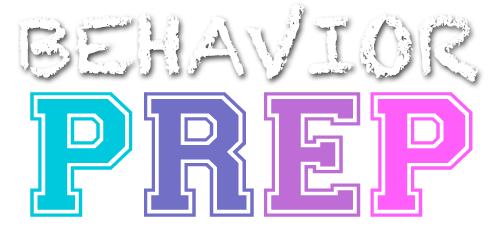G.5 Incorporate motivating operations and discriminative stimuli into behavior-change procedures
Incorporating motivating operations (MOs) and discriminative stimuli (SDs) into behavior change procedures involves using factors that increase or decrease the effectiveness of a reinforcer (MOs) and signals that indicate when reinforcement is available (SDs) to influence behavior. These elements help optimize the effectiveness of interventions by ensuring the conditions are right for the desired behavior to occur. Here’s a description of each concept and examples of how a BCBA would utilize them in interventions:
Motivating Operations (MOs)
Motivating operations are environmental events or conditions that temporarily alter the value or effectiveness of a consequence, thereby influencing the likelihood of a behavior occurring. Two types of motivating operations exist: establishing operations (EOs) and abolishing operations (AOs).
Establishing Operations (EOs)
EOs increase the value or effectiveness of a consequence, making a behavior more likely to occur. EOs create a state of deprivation or need, making the reinforcer more potent.
Example: A BCBA working with a hungry child (EO) during a therapy session may use food as a reinforcer to increase the child’s motivation and engagement in learning tasks.
Abolishing Operations (AOs)
AOs decrease the value or effectiveness of a consequence, making a behavior less likely to occur. AOs reduce the need or motivation for a particular reinforcer.
Example: If a child has just had a large meal (AO), the BCBA may choose to use a different reinforcer, such as access to a preferred toy or a break from a challenging task, to maintain motivation and engagement.
BCBAs identify and manipulate motivating operations to create optimal conditions for behavior change. By assessing and understanding the individual’s current motivational state, they can select appropriate reinforcers and adjust the environment to enhance the effectiveness of interventions.
Discriminative Stimuli (SDs)
Discriminative stimuli are cues or signals in the environment that indicate the availability of reinforcement for a particular behavior. SDs set the occasion for a behavior to occur, as the individual has learned that responding in the presence of the SD is likely to lead to reinforcement.
Example: In a classroom setting, a BCBA may use a visual schedule (SD) to indicate that completing assigned tasks will result in free play or access to a preferred activity. The presence of the visual schedule serves as a discriminative stimulus, signaling to the student that engaging in the assigned tasks will lead to reinforcement.
BCBAs identify and manipulate discriminative stimuli to prompt desired behaviors and establish appropriate contingencies. They may introduce or modify environmental cues to enhance the discriminative stimulus control over behavior.
BCBAs identify and manipulate discriminative stimuli to prompt desired behaviors and establish appropriate contingencies. They may introduce or modify environmental cues to enhance the discriminative stimulus control over behavior.
